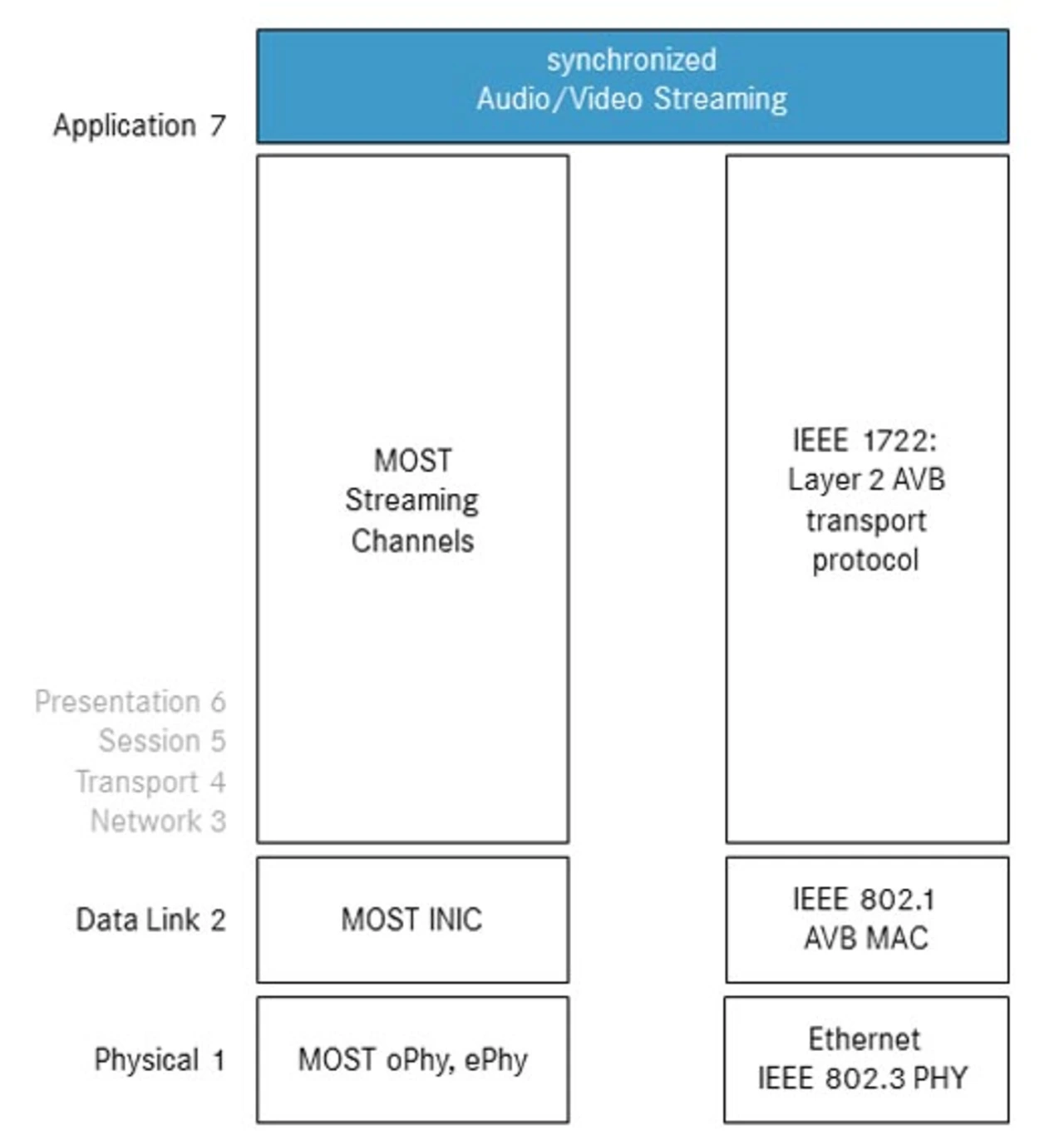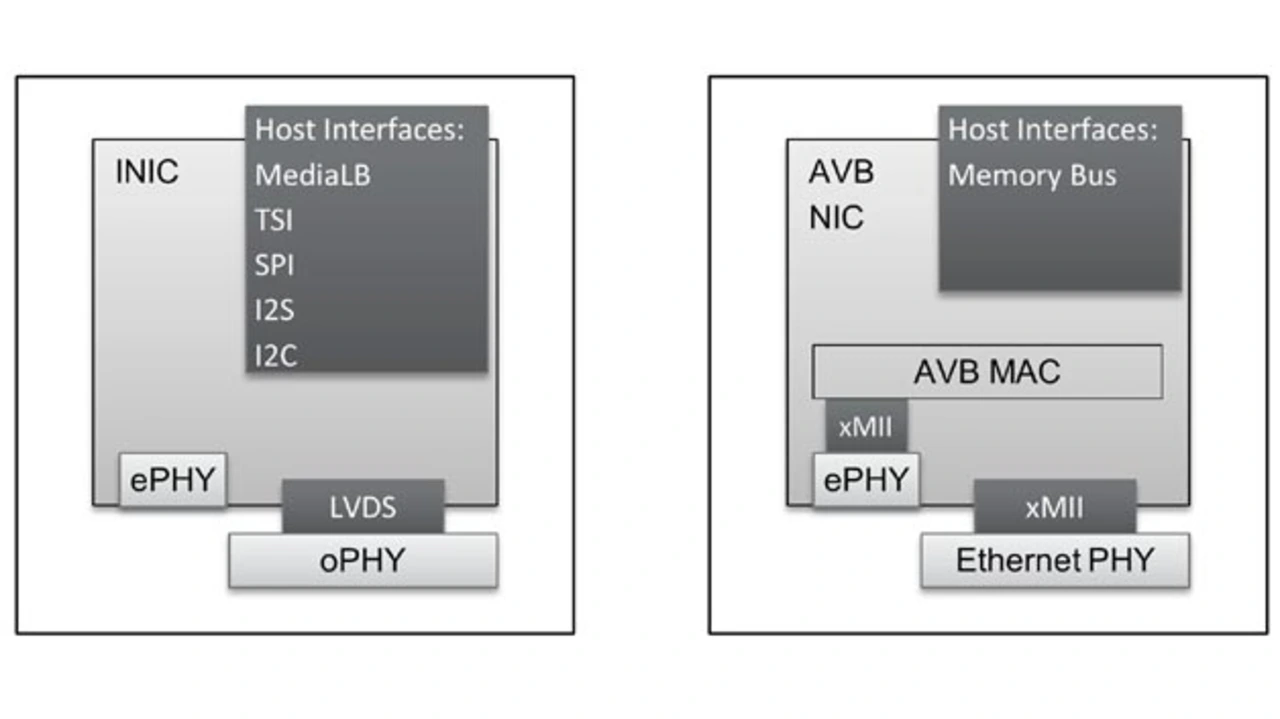MOST Network and System
MOST and AVB: Two Candidates for Infotainment Networks
Fortsetzung des Artikels von Teil 1
MOST and AVB in comparison

Both the AVB and the MOST approaches encounter critiques on various technical aspects. These can be answered more or less satisfyingly, as the discussions are about systems-to-be and that kind of critique is mostly based on experience gained from current systems. Concept proposals, on the other hand, are the technical basis for the time being. They are a flexible matter and therefore often deliver only weak arguments for hard technical decisions.
MOST as a synchronous system has the advantage of inherently providing maximum quality of service (QoS), since collisions or priority conflicts principally do not occur. Delay is minimal and, moreover, it is deterministic and predictable, thus enabling application-level synchronisation with simple fixed delay elements. On top of this, MOST150 offers isochronous and packet channels, including a transparently usable Ethernet channel. In the short term, the MOST Multiport INIC concept as presented earlier [7] has already answered the most frequently raised objections against classic MOST systems by enabling flexible, mixed topologies and different speed grades on the same net. A MOST successor, preliminarily called “MOSTnG”, will further improve on this, key points being error detection/correction and bridging between network clusters, which may run at different speed grades over various, even mixed physical layers.
With introducing AVB standards, Ethernet as a packet-switched networking technology responds to the lack of guarantees and determinism with a synchronised network layer, enabling time-synchronised low-latency streaming services. The standards cover precise clock synchronisation, traffic classes with bounded latency, partitioning of bandwidth, stream reservation, traffic prioritisation and data link layer transport protocol. Layering of this synchronised network looks very similar to synchronous MOST (Figure 1). However, application level synchronisation is not a question in the scope of AVB standards so far and thus must be taken into account by application developers.
Regarding automotive infotainment systems, a crucial feature is the seamless integration of audio/video (A/V) interfaces in the network interface controllers. A/V streams should be directly transferred to corresponding A/V interfaces, thus unloading the host processor from handling A/V tasks. The MOST150 INIC already integrates various interfaces such as MediaLB, TSI, SPI, I2C and I2S, benefitting from its synchronous network layer transport. AVB-enabled Ethernet NICs can, in principle, provide similar interfaces by separating AVB streams from other traffic on the Data Link Layer, taking care that the AV streams do not burden the host processor. However, such functions are not found in today’s NIC implementations (Figure 2).
Jobangebote+ passend zum Thema

- MOST and AVB: Two Candidates for Infotainment Networks
- MOST and AVB in comparison
- Differences between both technologies
- Evaluating AVB and interoperability
- Authors: